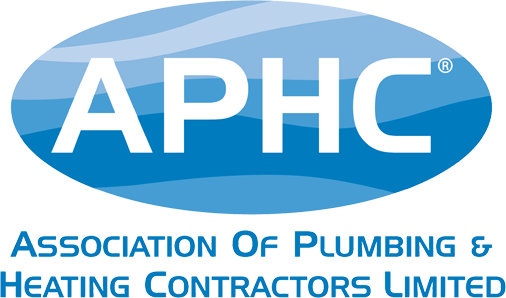How do you know how much to charge for plumbing work? Whether you’ve been doing the job for 30 minutes or 30 years, the market is always changing so it’s important to price strategically with profitability in mind.
When deciding how much to charge for plumbing work there are different types of rates and a variety of factors that you will need to consider.
Can You Charge More on Weekends and Holidays?
If you’re providing a service outside of standard working hours or on a national holiday, you can charge an additional fee. A lot of plumbing services will also add a call-out fee for this kind of work as it can be an inconvenience to the plumber. There are a lot of variables that will affect the outcome of what you wish to charge for weekend work and national holidays, but it’s very common for these rates to be double standard rates.
Types of Rates
Let’s take a look at the different types of rates you need to consider when deciding how much to charge for plumbing work.
- Per hour
An hourly rate tends to be the popular choice within the plumbing world. No matter how small the job is, the majority of plumbers will charge their hourly rate as standard to cover their overhead. In order to calculate your hourly rate, divide the amount of money you’d like to earn each week by the number of billable hours. The figure you’re aiming for should also take into account other business costs, such as materials, overhead and any other outgoings. It never hurts to check out what local businesses rates are in your area as well so you can try to price competitively.
- Flat rate
This rate is one set price based on the end result and the work that is carried out. You’ll still need to take into account the time it takes to finish the work as well as material costs and overheads. From a customer’s perspective, it’s a lot more appealing to have one set price because it shows exactly what they need to budget for. However, it’s important when charging a flat rate that you not only consider what is fair to your customers, but also what will be profitable for your business. One disadvantage of a flat rate is that there can sometimes be unforeseen circumstances which were not accounted for.
- Job type
This pricing model is a hybrid mix of the two pricing strategies above. You can have an hourly rate or a flat rate based on a job type. This kind of pricing is perfect if you’re regularly doing the same types of jobs. For example, a blocked sink or toilet would come under one job type. And installing a new water heater or toilet would be categorised as another. You want to group job types together that are of a similar nature and cost in order to price accurately.
How Much to Charge for Plumbing: What to Consider
There are so many variables when it comes to putting together a pricing strategy for your plumbing work or business. Let’s take a look at each of these and discuss how they affect job costing:
- Complexity of the job
You’ll need to consider the time a job will take when planning how much to charge for plumbing. The time taken to complete will weigh in with the complexity of the job, for example, a predictable type of work could be a clogged drain or a leaky tap. They won’t take up a lot of your resources and you can hopefully be in and out within a couple of hours. On the other hand, fitting a new toilet is a more complex and time consuming process so will naturally cost more. In addition to this, while you’re on larger jobs you’re bringing in revenue at a slower rate. Depending on the size of the team or business, the complexity will affect the amount of jobs accepted and start dates for the work.
- Material cost
It’s common to let the customer know which materials are required and why so then you can charge for these costs within your price quoted. As the material costs will differ depending on the complexity and type of job, you need to be sure you include them within the hourly or flat rate charge. If there are any unforeseen challenges requiring additional materials, make sure you check with the customer before ordering anything. Being open and upfront will solidify the relationship and build trust with the customer.
- Profit margin
Figuring out profit margin is something you want to do fairly early on. This will determine how much money you make after all other business costs are accounted for. Costs such as overhead (electricity, heating, phone bills etc.), employee wages and materials. The average profit margin for plumbing jobs is between 35-40%, so keep this in mind when calculating rates.
- Vehicle expenses
You may have your own vehicle or perhaps you’re in charge of a team that has multiple vehicles between them. Whatever the setup, this type of expense needs to be accounted for including petrol, insurance and services that all add up. You should also consider this with each location of a job as petrol can be incredibly costly. Ensuring this type of expense is factored into your pricing is paramount to maintaining profitability.
- Labour Cost
Labour costs reflect the amount of time it will take to complete the job. By following this equation you can work out your labour costs:
(# of labour hours) X (hourly rate) = (total labour costs)
- Expertise level
Based on your own experience and knowledge, or the team you’re managing, you can create different pricing brackets. For example, a trainee plumber is likely to earn less than another who’s been in the industry for a many number of years. There will also be jobs that plumbers with less experience won’t be tackling due to their knowledge level. For larger work it’s going to take more time and include more complexity, therefore it makes sense to price these jobs not only by complexity but also based upon the experience level of the technician completing the job.
- Location
It’s important to factor location into your pricing strategy too as the location of your business could affect your earnings. For example, in larger cities plumbers tend to inflate their prices by about 20% compared to smaller towns. Geographical location can be highly advantageous to you as a business if you price accordingly. Another aspect to consider is travel time as you may want to charge extra for travel over a certain distance (you also need to consider the petrol costs mentioned previously).
- Additional repairs
Occasionally, you’ll go to do some work and the initial job won’t be quite as simple as you first thought. Additional repairs come up every now and again that you can’t foresee, be upfront with the customer and advise them it’s going to require additional work. Therefore, the costs will have to change and explain the reasoning behind it.
Summary
There are lots of different variables when deciding how much to charge for plumbing work. Whether you’re a lone ranger or you have a larger team, make sure you take all of the above into account. There’s no harm in adapting the pricing structure as you go either, especially if you’re a new business there’s a lot of trial and error involved.



